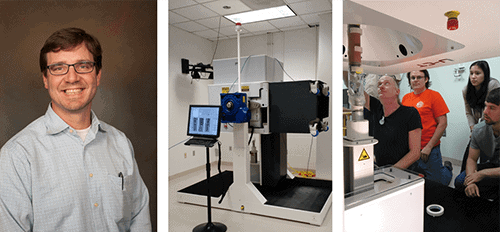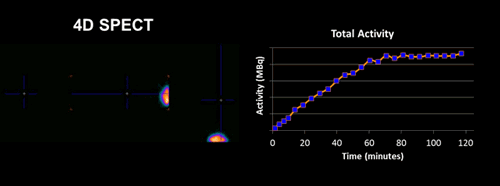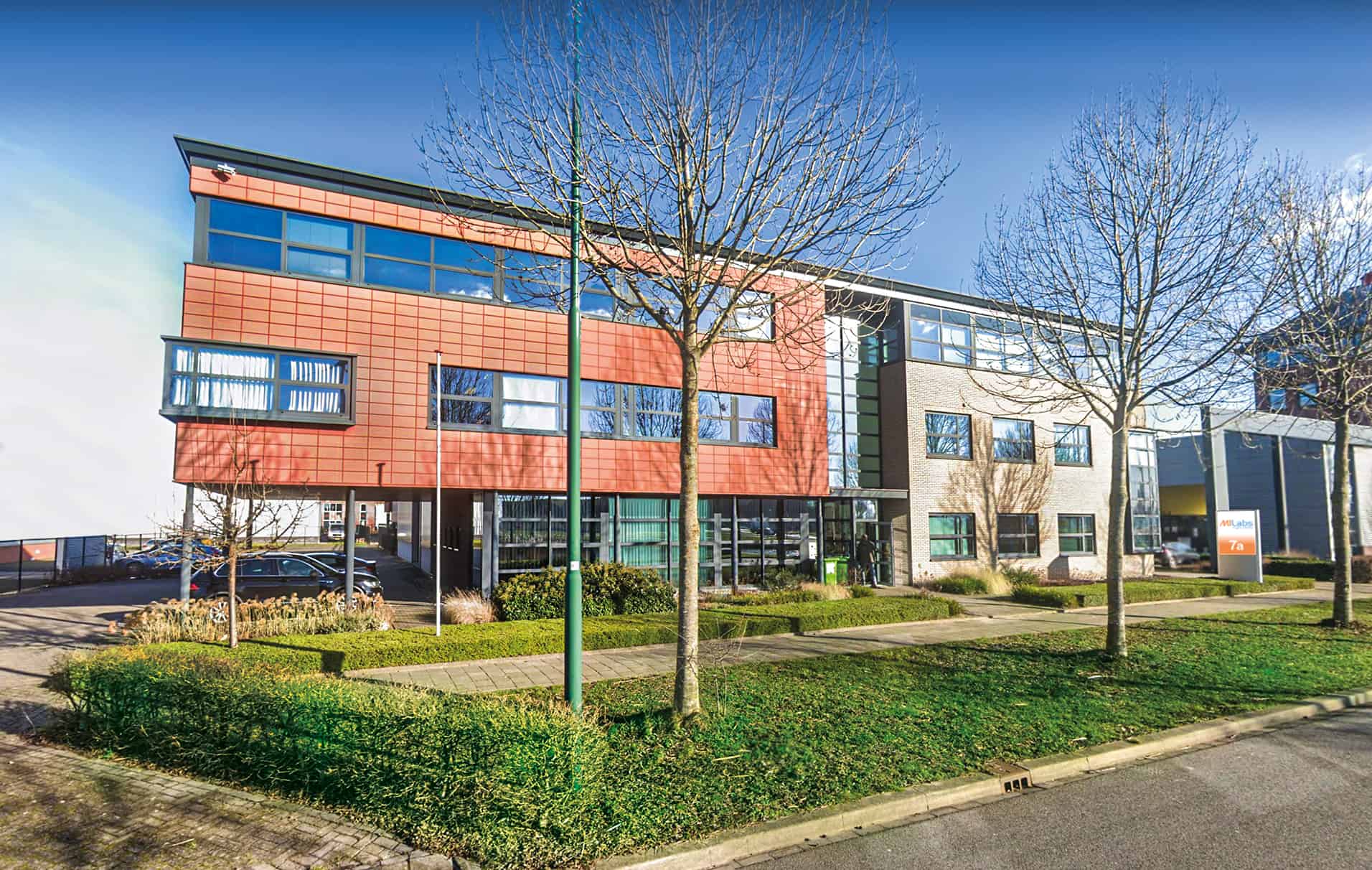Nuclear Environmental Engineering and Science
Prof. Brian Powell is Fjeld Professor in Nuclear Environmental Engineering and Science at Clemson University. His research focuses on biogeochemical processes controlling radionuclide behavior in the environment such as sorption by minerals, interactions with nano-colloids, complexation by organic ligands, and interactions with microorganisms.
 |
| Left: Prof. Powell; Middle: MILabs’ vertical CT system; Right: MILabs’ engineer René Barthel instructs students at Clemson University. |
Can you explain what the research focus is of your group at the Clemson University School of Environmental Engineering and Earth Science?
Our research focuses on the study of physical and biogeochemical processes controlling radionuclide behavior in the environment such as flow in rocks and soils, absorption by minerals, uptake by plants, as well as direct and indirect interactions with microorganisms. Many in our group are investigating interactions and feedbacks between physical, biologic, and chemical processes in natural and human-influenced environmental systems. Examples of active research areas include watershed dynamics, biogeochemistry, and radioecology.
Clemson initially has installed the MILabs U-CT in a customized vertical bore orientation. Why is this important for your research?
The vertical bore orientation of the MILabs U-CT allows our group to more easily replicate what happens naturally in the environment with fluid flow through our test samples. Typical CT bores are oriented horizontally, and to measure fluid flow, we would have needed to design mechanical means to force fluids through our samples. With MILabs flexibility to design a vertically oriented CT bore-based system, we can more accurately replicate natural flow conditions in soil, plants and other environmental samples.
Can you explain why especially CT is important for soil research?
The unique cross-disciplinary background of our faculty is providing exciting opportunities for utilization of CT imaging to enhance environmental sustainability, including work in the areas of biofuels, carbon sequestration, and water resources. CT sample scanning is critical to this work and the MILabs microCT system will aid our research in this area by quantifying fluid flow in soil as well as root growth. We are working with the U-CT to determine if the instrument has sufficient resolution, sensitivity and speed required to visualize and quantify these fluid dynamics.
Clemson also has plans to upgrade the U-CT with SPECT detectors in the future. What will be the focus of this second phase of your research?
We ultimately want to develop an understanding and prediction of the physical, chemical, and biological processes which govern radionuclide transport and fate in soil and porous material samples. The addition of SPECT detectors to generate 3-dimensional images and to accurately quantify radioactive flow measurements will be critical in the next phase of our work.
 |
| High-resolution quantitative 4D imaging of radionuclide transport through porous material by using with 99mTc and ultra-high resolution CT. |
The MILabs scanner has the unique capability to image both SPECT and High Energy SPECT. Why is this required for soil research?
Our group conducts sponsored research in a wide range of projects dealing with topics of nuclear environmental engineering and science, environmental health physics, hydrogeology, geophysics, geology, environmental radiochemistry, microbiology, and plant physiology. We seek to integrate these disciplines to gain a more complete understanding of the processes controlling the migration of radioisotopes in natural and engineered systems. In the next phase of our work, we will need the additional capability to also measure the transit of these higher energy radioactive particles in soil samples. The MILabs system has exhibited in preliminary tests the ability to effectively track this radioactive transit at the resolution and sensitivity levels required for our research.
What is the added value of MILabs systems for your research?
MILabs exhibited a keen interest in our work and wanted to really understand our research goals. MILabs offered our group not only a collaborative opportunity to work together to optimize results from their system and our work, but also demonstrated a willingness to adapt and customize their traditional system design to meet our true imaging needs. This resulted in a unique vertically oriented CT gantry design to facilitate our need to image natural fluid flow and dynamics through soil and porous materials.
